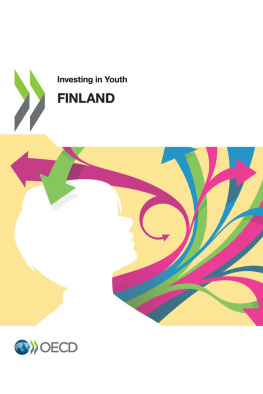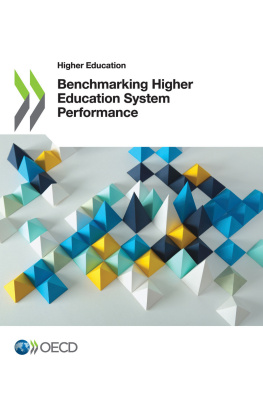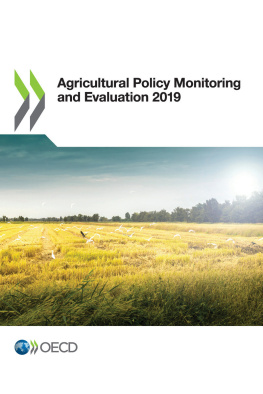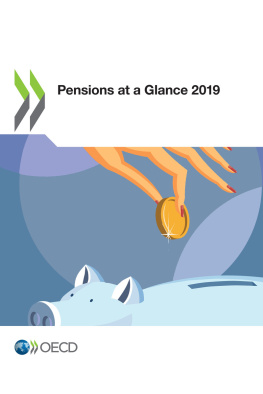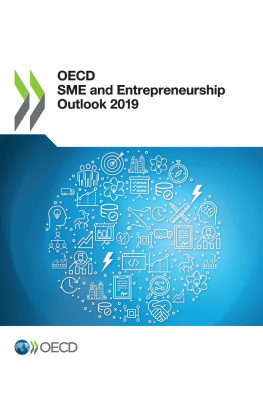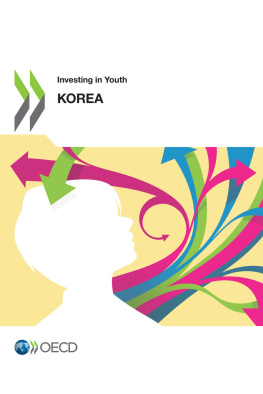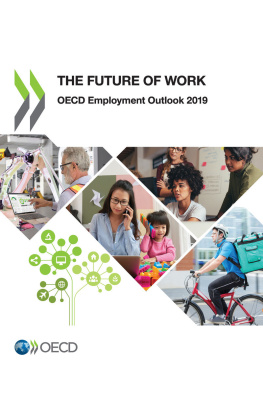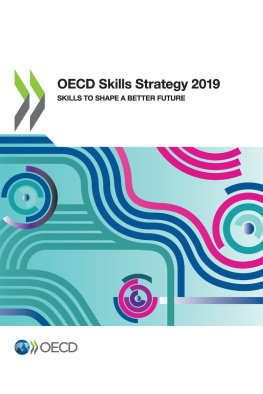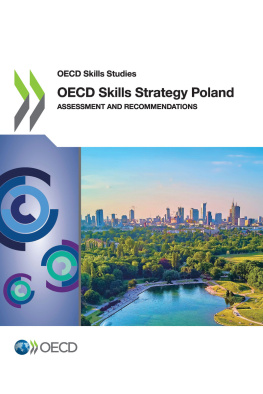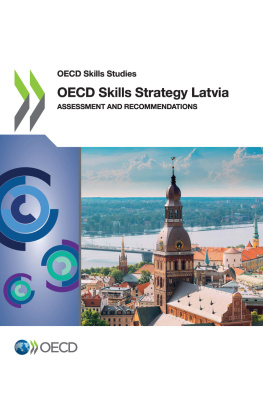OECD - Investing in Youth: Finland
Here you can read online OECD - Investing in Youth: Finland full text of the book (entire story) in english for free. Download pdf and epub, get meaning, cover and reviews about this ebook. year: 2019, publisher: OECD Publishing, genre: Politics. Description of the work, (preface) as well as reviews are available. Best literature library LitArk.com created for fans of good reading and offers a wide selection of genres:
Romance novel
Science fiction
Adventure
Detective
Science
History
Home and family
Prose
Art
Politics
Computer
Non-fiction
Religion
Business
Children
Humor
Choose a favorite category and find really read worthwhile books. Enjoy immersion in the world of imagination, feel the emotions of the characters or learn something new for yourself, make an fascinating discovery.
Investing in Youth: Finland: summary, description and annotation
We offer to read an annotation, description, summary or preface (depends on what the author of the book "Investing in Youth: Finland" wrote himself). If you haven't found the necessary information about the book — write in the comments, we will try to find it.
OECD: author's other books
Who wrote Investing in Youth: Finland? Find out the surname, the name of the author of the book and a list of all author's works by series.
Investing in Youth: Finland — read online for free the complete book (whole text) full work
Below is the text of the book, divided by pages. System saving the place of the last page read, allows you to conveniently read the book "Investing in Youth: Finland" online for free, without having to search again every time where you left off. Put a bookmark, and you can go to the page where you finished reading at any time.
Font size:
Interval:
Bookmark:

OECD (2019), Investing in Youth: Finland , Investing in Youth, OECD Publishing, Paris, https://doi.org/10.1787/1251a123-en .
As highlighted in the OECD Action Plan for Youth, successful engagement of young people in the labour market is crucial not only for their own personal economic prospects and well-being, but also for overall economic growth and social cohesion. Therefore, investing in youth is a policy priority in all countries, including Finland, requiring concerted action to develop education systems and labour market arrangements that work well together.
Following the launch of the OECD Action Plan for Youth in May 2013, the OECD is working closely with countries to implement the plans comprehensive measures in their national and local contexts and to provide peer-learning opportunities for countries to share their experience of policy measures to improve youth employment outcomes. This work builds on the extensive country reviews that the OECD has carried out previously on the youth labour market and vocational education and training (Jobs for Youth, Learning for Jobs and Skills beyond School), as well as on the OECD Skills Strategy.
The present report on Finland is the tenth of the series Investing in Youth, which builds on the expertise of the OECD on youth employment, social support and skills. This series covers OECD countries and key emerging economies. The report presents new results from a comprehensive analysis of the situation of young people in Finland, exploiting various sources of survey-based and administrative data. It provides a detailed assessment of education, employment and social policies in Finland from an international perspective, and offers tailored recommendations to help improve the school-to-work transition. Additional information related to this review can be found on the OECD website ( http://oe.cd/youth-finland ).
This review is joint work by the Social Policy Division and Skills and Employability Division of the Directorate for Employment, Labour and Social Affairs (ELS). Sarah Kups, Christopher Prinz and Marie-Anne Valfort prepared the report, under the supervision of Veerle Miranda (project leader) and Monika Queisser (Head of the Social Policy Division). Pauliina Patana contributed to the review as consultant and Fatima Perez provided editorial support. The report benefited from useful comments provided by Stefano Scarpetta (Director for Employment, Labour and Social Affairs).
The OECD Secretariat would like to thank the Ministry of Education and Culture and in particular Anna-Maria Tenojoki, Jaana Walldn and Georg Henrik Wrede, for their excellent support in carrying out this project and for organising the initial fact-finding mission in April 2018. Anna-Maria Tenojoki deserves special thanks for her continuous support throughout the review process with policy information and statistical support. The OECD Secretariat is also grateful to Elisa Kaaja and Henni Axelin for ensuring a successful completion of this project as well as to the numerous experts who shared their knowledge about Finlands education, employment and social policies for youth during the fact-finding mission and provided feedback to a draft version of the report.
Finland's education system ranks consistently among the best in the OECD, but inefficiencies in employment and social policies are hampering a smooth transition into the labour market for a considerable share of the youth population. The youth employment rate is slightly above the OECD average but markedly below those in other Nordic countries, while youth unemployment is only slowly recovering from a series of economic shocks that affected Finland in the past decade. With a strong demand for high-skilled workers and persistent shortages in high-skilled jobs, low-skilled youth encounter particular difficulties in the Finnish labour market. Those who failed to complete upper secondary education account for nearly half of all youth who are not in employment, education or training (the so-called NEETs).
Despite the outstanding performance of the education system, there is room to raise completion rates in upper secondary education, especially among vocational students. A recent reform of the vocational upper secondary education system introduced many promising changes, but some additional adjustments could boost the pay-offs of these reforms. It is essential to better engage employers and to support them with the tasks of offering workplace learning. To ease the transition from upper secondary to tertiary education and provide the labour market with the necessary skilled workforce, Finland would also need to reform the highly selective admission procedures for tertiary education and expand its capacity.
Finland has one of the most generous benefit system for young people among OECD countries. The wide range of benefits and services help young people face economic and labour market challenges, but they also create considerable disincentives to seek work and leave benefit. The benefit system is complex and disjoint, with no direct connection between different types of payments and the limited connection between benefits and employment services hinders the implementation of a stronger activation regime.
The coming years will therefore be critical for Finland and the government must make every effort to streamline the benefit system and strengthen activation for young jobseekers. The planned but currently halted administrative and regional government reform (the so-called SOTE reform) is not making these challenges easier as it would reinforce the disconnection between benefits (a national matter) and employment and other services (a regional matter).
Font size:
Interval:
Bookmark:
Similar books «Investing in Youth: Finland»
Look at similar books to Investing in Youth: Finland. We have selected literature similar in name and meaning in the hope of providing readers with more options to find new, interesting, not yet read works.
Discussion, reviews of the book Investing in Youth: Finland and just readers' own opinions. Leave your comments, write what you think about the work, its meaning or the main characters. Specify what exactly you liked and what you didn't like, and why you think so.

